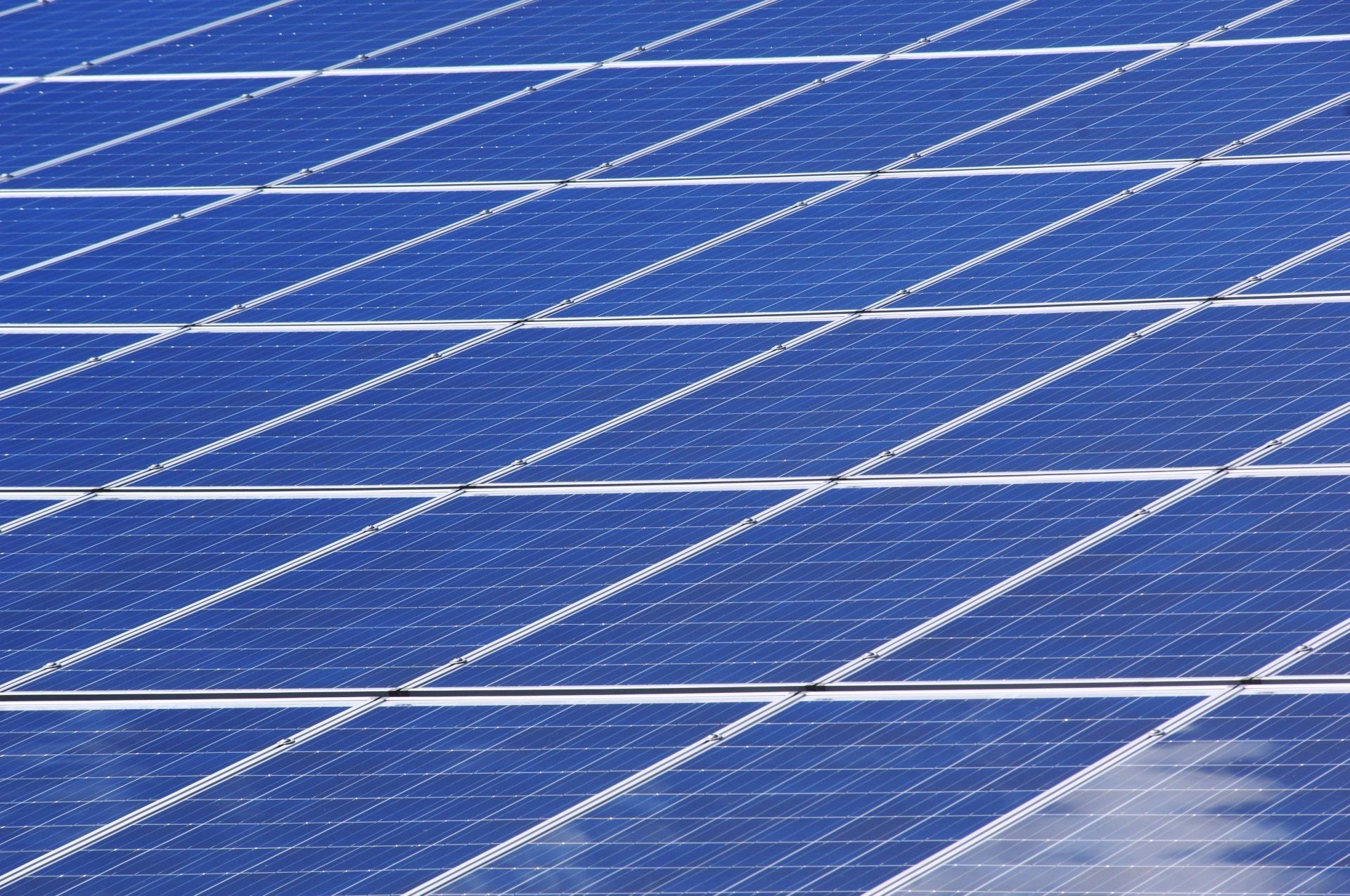Can I Rely Only on Solar Energy to Power My House?
Solar power's ability to harness the sun's abundant energy makes it a popular renewable option for homeowners. However, according to CanmetEnergy, rooftop solar remains an underutilized resource in Canada.
With 15 million residential and 500,000 commercial and industrial buildings, the country has plenty of rooftop space for serious sun generation. But Canada's solar bounty has been primarily underutilized thus far.
Challenges and a lack of knowledge about its potential in the local climate contribute to this. One typical concern is: Can solar energy alone fully power a home?
This article will examine whether a solar roof installation can meet your household's electricity needs, considering the local climate, energy consumption, and advances in photovoltaic technology.
How PV Systems Can Meet Electricity Needs in Canadian Homes
Rooftop systems use photovoltaic (PV) panels to generate electricity. These silicon panels convert sunlight into direct current (DC), which inverters convert into alternating current (AC) for household appliances.
- Due to technology, government incentives, and rising utility costs, rooftop solar roof panels are becoming more common in Canada.
- An efficient structure can supply a home's electrical needs, especially in summer when daylight is the longest.
Offsetting Average Electricity Consumption in Canadian Households
A typical Canadian household uses 11,000 kWh of electricity per year, depending on the size, number of people, and use of energy-intensive appliances. This guide looks at average power ratings to help you figure out which appliances use the most electricity.
| Appliance | Estimated consumption |
|---|---|
| Kettle | 2,000W |
| Washing Machine | 1,200 - 3,000W |
| Dishwasher | 1,050 - 1,500W |
| Microwave | 600 - 1,500W |
| Vacuum Cleaner | 500 - 1,200W |
| Plasma TV | 280 - 450W |
| Phone/Tablet charge | 10W |
| LED Light Bulb | 10W |
In most of Canada, a 5-kilowatt (kW) unit with 15-20 panels can produce 6,000 to 7,000 kWh per year under ideal conditions. This output can cover over half of an average household's annual electric consumption, reducing grid dependence.
Seasonal Variations and the Impact of Winter Months
The seasonal variation in sunlight in Canada makes sun energy a significant challenge. Battery storage or net metering can offset electricity costs during low production by crediting homeowners for excess output. In winter, things change.
- Shorter days, lower sun angles, and panel snow cover can significantly reduce electric production.
- Winter production is 10-20% of summer output in some regions.
- Most Canadian homes using PV output in these months would need grid electricity unless they have storage or other renewable sources.
Factors That Influence System Coverage
Energy Consumption
System size and effectiveness depend on a home's electrical consumption. Larger systems are needed for homes with advanced heating or multiple high-wattage appliances. Pre-installation audits can help homeowners understand their usage patterns and find ways to reduce consumption.
Roof Space
The number of panels installed depends on the roof space. More units on larger roofs boost electricity generation.
- Most panels are 1.6 square meters, and a 5-kW system may require 20 to 30 square meters of roof space.
- High-efficiency units that produce more electricity per square meter may be better for homes with limited roof space.
Orientation and Shading
Roof orientation and tilt are essential to electricity production.
- In Canada, south-facing roofs get the most sunlight.
- East—or west-facing roofs work but produce less output.
- Trees, buildings, or other shading can significantly reduce a system's efficiency.
If not mitigated with microinverters or power optimizers, partial shading on a single panel can influence system performance.
Climate
Electric generation is better in southern Ontario and British Columbia than in the Atlantic provinces, which have more cloud cover.
- Despite the challenges, the right design and location can make PV a reliable and significant home electrical source in much of Canada.
- Modern systems are designed to withstand winter; snow slides off or melts quickly due to the panel's heat.
System Sizing: Determining the Right System for Your Home
Load Calculation: Estimating Your Needs
Before installing a system, your home's load must be accurately calculated. This involves measuring your household's kilowatt-hour electricity consumption.
- Review your past year's bills to determine your average consumption.
- A more accurate calculation may require an audit that accounts for electrical device usage.
- After calculating your average consumption, match your needs with a PV output.
Panel Efficiency: Maximizing Production
Efficiency affects system sizing because it determines how many panels are needed to meet your needs.
- Increased efficiency allows you to generate more power per square meter with fewer panels.
- Even with equal sunlight, a 22%-efficient panel will generate more output than a 15%-efficient panel.
- High-efficiency panels are more expensive but can maximize production in a small space.
Scalability: Energy Planning
Scalability is a benefit of solar power. Adding panels or upgrading to higher-capacity inverters can increase your system's capacity as your household's electrical needs grow. Consider future expansions when planning your initial system. This may require leaving roof space for more panels or choosing a higher-capacity inverter.
How to Achieve 24-Hour Power
Net-Metering: Grid-Solar Balance
Net metering feeds excess output into the grid, “banking” it for future use. In low-solar periods, like at night or cloudy days, you can source electricity from the grid and offset the cost with credits. It balances production and consumption seamlessly, ensuring you always have power.
Battery Backup Systems: Storing for Later Use
Battery backup systems can light your home at night or during low sunlight production, reducing grid dependence. They cost more but provide more independence and security, especially in power-outage-prone areas.
Hybrid Systems: Grid Plus Solar System
Hybrid systems use grid and sunlight energy production to produce power regardless of sun conditions. They combine panels, inverters, batteries, and grid connections.
- You can use your panels' daytime electricity, store it in batteries, or net-meter it to the grid.
- Switch to battery or grid power at night or during low sunlight production.
- Hybrids maximize sun production in regions with fluctuating weather while providing grid reliability.
How Long Solar Batteries Can Power a Home
How kWh Affects Battery Capacity
Batteries store and supply energy to your home in kilowatt-hours (kWh). For instance, a 10-kilowatt-hour (kWh) battery could provide 10 kW of supply for an hour, 5 kW for two hours, or 1 kW for ten hours.
- Your household's electric consumption and capacity determine how long a battery can energize your home.
- Homes with higher needs benefit from high-capacity batteries.
Essential Appliance Energy Consumption
A fully charged battery can run in your home, depending on which appliances you use. Refrigerators, lighting, and heating systems use less power than air conditioners and electric ovens.
- If your household's essential appliances use 3 kWh per hour, a 10 kWh battery could last 3.3 hours.
- Alternatively, a battery can last 10 hours with 1 kWh per hour loads.
- Prioritizing essential loads during battery reliance can extend usable time. Keep functions maintained through low or no sun production.
Multiple Batteries: Extended Backup Scenarios
Sometimes, a single battery will not be enough to energize a house, especially during outages or low sun production. Multiple batteries can store more output and keep your home powered longer. These systems can also power different residential parts or prioritize appliances based on an energy storage system.

Consult Expert Installers Today
A well-designed setup can meet many electrical needs, but seasonal variations and storage limitations may require grid or other help. Hybrid systems, net-metering, and battery backups enable near-energy independence.
The feasibility of using only sun energy depends on your electrical consumption patterns, climate, and home layout. Professional installers at Coquitlam Solar Energy can design a system that meets your needs and maximizes renewable benefits. We can also help you throughout the solar installation process, considering many factors to ensure the fastest payback period.
Frequently Asked Questions
How do I know if my home is suitable for installing solar panels?
For the most accurate assessment of your home’s potential for harnessing sunlight, hire a professional site assessment. This evaluation will consider several factors, including:
- your roof’s orientation
- shading
- available space
- local climate
Home systems that capture sunlight work best with south-facing roofs, minimal shading, and sufficient space.
How long does a storage unit typically last, and how do I know when to get a new one?
Storage units usually last anywhere from 10-15 years, depending on the model and how often they’re used. Residential setups use lithium-ion storage, which lasts longer and offers better performance. Proper maintenance and regular monitoring can further extend the life of your storage unit.
Can a system that captures sunlight run my home even during a blackout?
Only if your setup includes an energy storage solution. A standard grid-tied system will shut down for safety during a blackout unless equipped with a backup battery or hybrid inverter. When the grid goes down, the storage solution can keep your home running using the excess output it has stored.
CONTACT
Telephone: 604-337-1958
E-mail: info@coquitlamsolarenergy.ca
LOCATION
Coquitlam, BC V3B 0A4, Canada
Coquitlam Solar Energy | All Rights Reserved | 2023
